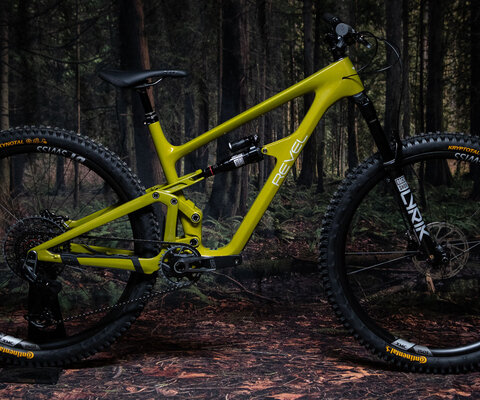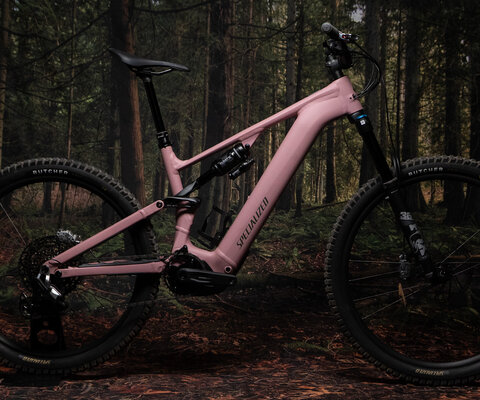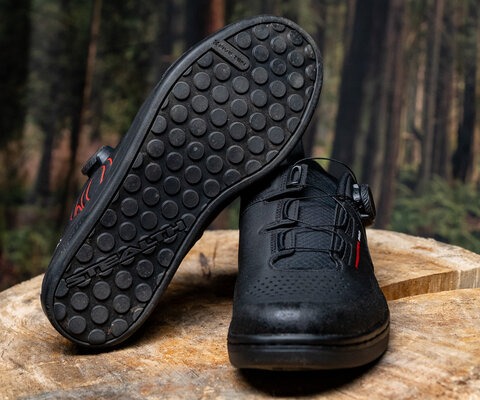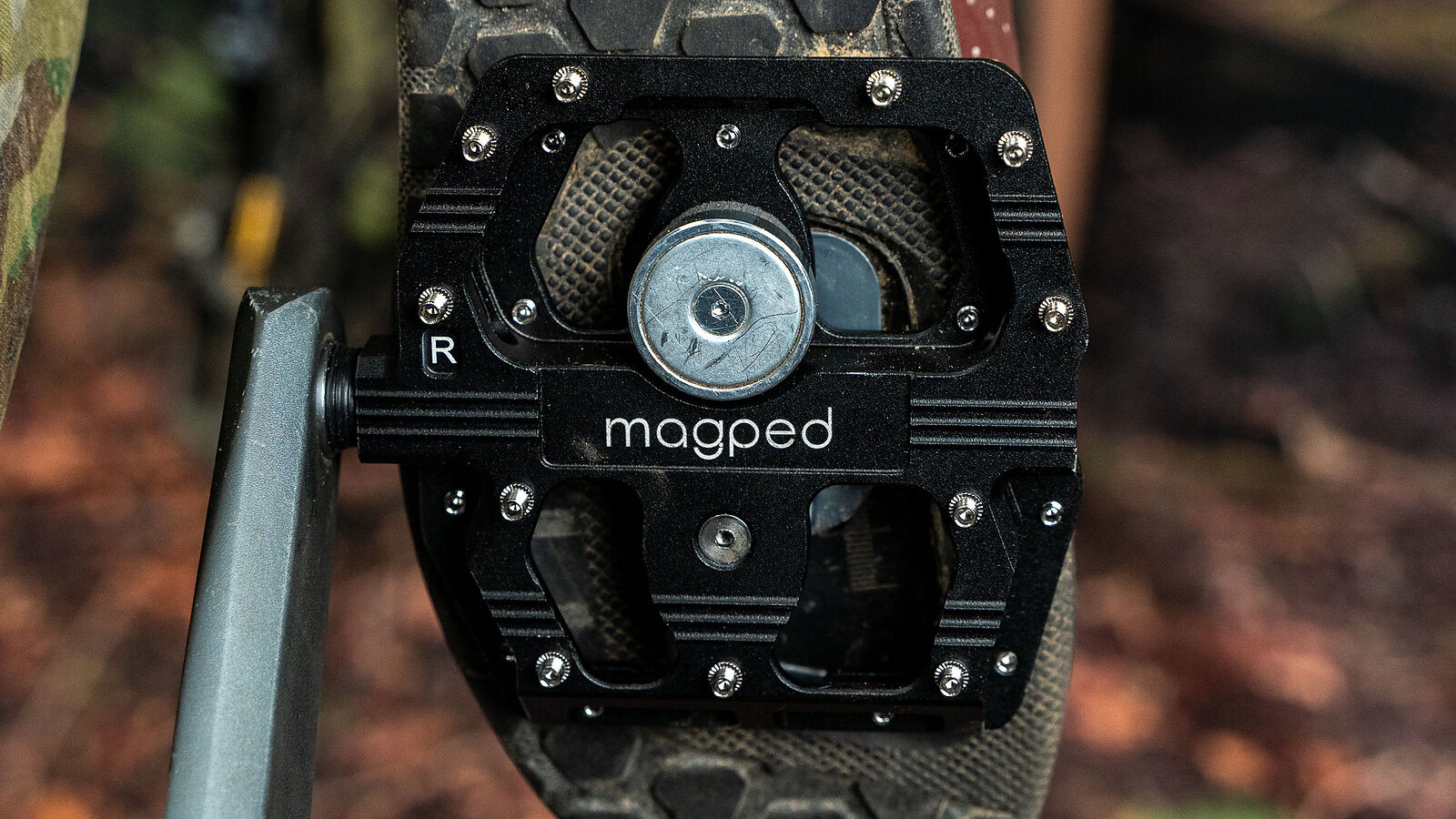
Magped Gravity Pedal Component Review
Words and Photos by Cy Whitling
Can magnets bridge the gap between clipless and flat pedals?
Magped is no stranger to magnetic pedals. It’s in the name after all. The German brand has been building and selling magnetic bike pedals since 2018, and the Gravity is its latest entry into the genre. Freehub reviewed the brand’s original Enduro pedal years ago but, since then, Magped has been hard at work tweaking and improving its formula.
My combination of weak knees, poor hip rotation, and a long-standing desire for more secure flat pedals makes me a prime candidate for Magped’s latest offering, and I’ve enjoyed how the riding experience it delivers differs from Magped’s previous designs.
Magped Gravity Pedal Overview
- Magnets: Two 150 or 200N magnets per pedal
- 11 pins per side, swappable between 9 and 11 mm
- 16 mm thick
- Measured weight: 271 g (one pedal, 200N magnet, with pins)
- MSRP: $189-$209
In terms of price and weight, the Magped Gravity is similar to the Deity Tmac flat pedal which weighs 220 grams, and costs $180, and a little heavier and more expensive than OneUp's Clip pedals (205 grams, $160). The Gravity pedal uses a 7075 Aluminium body with a 12mm spindle which gives it a burly feel and means that it should be very durable.

Who Would Want Magnetic Pedals?
Magped’s mission is simple: deliver the security and efficiency of clipless pedals without the risk of not being able to unclip when you need to. They sell a full line of pedals for everything from townies, to gravel bikes, to these, the company's most aggressive pedal ever, the Gravity.
The divide between flat and clipless riders is one of the longer-standing differences in mountain biking. Some folks are comfortable flitting back and forth, swapping pedals at will. Others are smug, confident that their pedal of choice is superior. The final group, though, is stuck on one side of the divide or the other, constantly casting sidelong glances at the greener grass they perceive in the other camp. That last group is uniquely situated as Magped’s target demographic.
I used to be able to jump back and forth between flat and clipless pedals at will, with a preference for flats. However, a ski injury two years ago that left me rehabbing a bunch of knee parts all ending in “CL” has precluded me from riding clipless pedals. My wonky knee means that I run too much of a risk of messing up the twist and yank rotation that ejects my cleats from clipless pedals, and taking a spill attached to my bike. So I ride flats and grumble. I seek out the stickiest rubber for my shoes and the longest pins, and am jealous of my friends as I watch their feet effortlessly stay on their pedals through chunder and up tech climbs. If you’ve ever felt that same jealousy, the Magped Gravity might be for you.
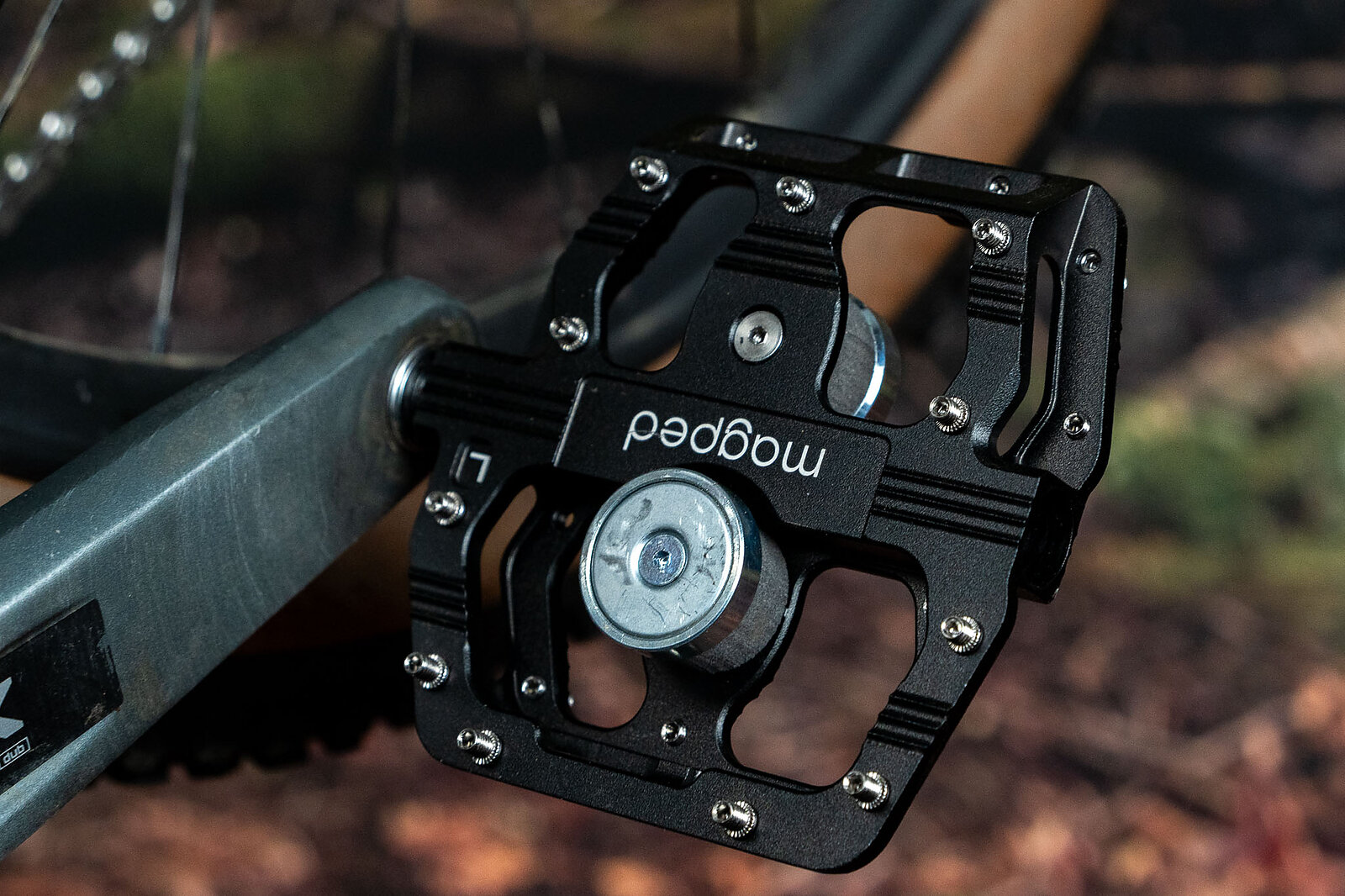
Setup and Release Tuning
Magped’s pedals come with an array of tuning options, and it’s worth paying attention to all of them as you set up your pedals. First, you can choose between 150N (riders up to 185 pounds) and 200N (riders larger than 185 pounds) magnets. At 200 pounds, the 200N was an easy choice. From there, you can configure your pin layout. Each pedal has holes for 22 pins total, and each pin is flippable between 9 and 11 millimeters protruding. Magped gives some advice in its instructions for potential pin layouts, but riders are encouraged to experiment. I started out with a concave (11 millimeter pins at the front and back, 9 millimeter in the middle) set up, and went from there. Finally, you can choose between regular and more ferrous Strong “cleats.” The “Strong” cleats provide about 30 percent more magnetic pull than the regular ones.
Once you’ve got your pins and plates set up, it’s time to dial in the height of your magnets. Magped includes a detailed video on this, and it’s worth watching. Each magnet is suspended on a damper, and you can dial in how high above the pedal platform it protrudes. This height is important. Too tall, and you’ll float without contacting the pins. Too low, and the magnet won’t contact the cleat. And if you’re off by a little, the magnet and cleat will click with every pedal stroke as you flex and unweight the sole of your shoe. So set this up in your driveway, and make sure that all four magnets are dialed in before you go for a ride.
Finally, this might be obvious, but Magpeds work best with clipless shoes that are most similar to flat pedal shoes—ideally a flat, sticky sole to contact the pins outside the cleat channel. I used Specialized’s 2FO and it was excellent. These pedals combined with cross-country-style shoes would be terrifying though.
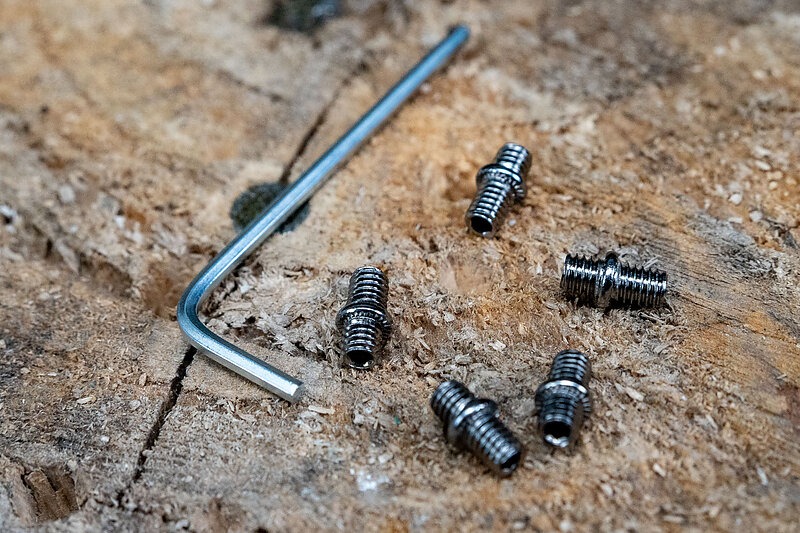
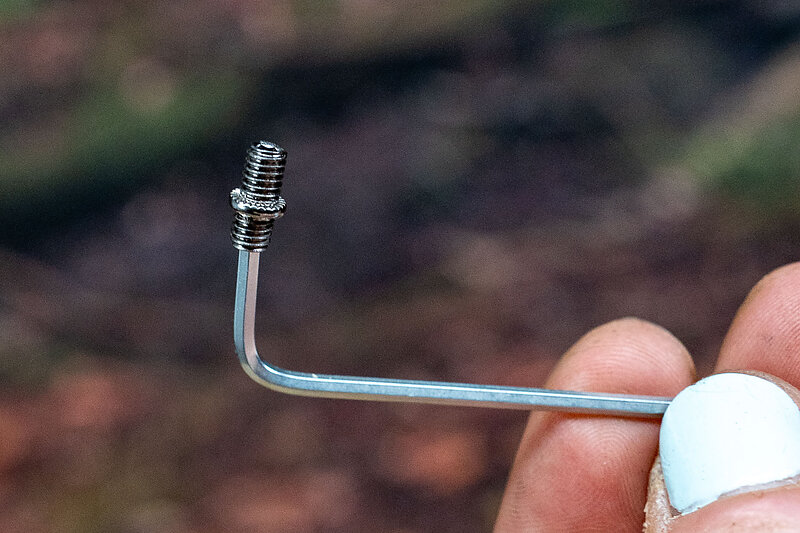
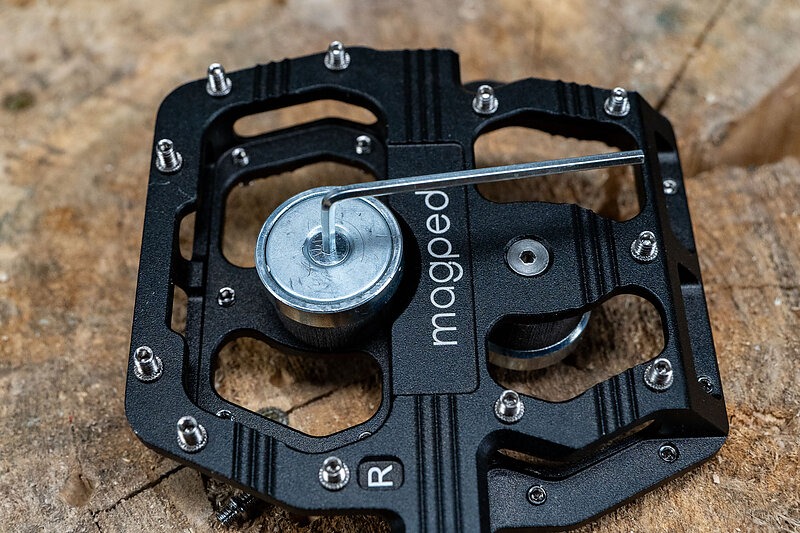
Performance
I started out on the Enduro2 to get a feel for Magped’s previous pedal design. I immediately found the foot position to be pretty uncomfortable. Descending with my feet so far back on the pedals felt scary. But I was struck by how much more secure my feet were than I anticipated. Even though the foot position was less than ideal, I slipped my pedals much less often than I worried I would thanks to the magnetic retention. Even so, I quickly determined that while the Enduro2’s foot position might work for folks used to riding clipless pedals with their feet very far back on the pedal, I wasn’t comfortable riding them hard.
So I switched to the Gravity and, wow, did it make a difference! Now my feet were positioned exactly where I wanted them to be on the pedal and, better yet, the magnets pulled my feet in so that every time I dabbed or got on the bike, my feet were centered perfectly. I could drive the bike through my arches like I’m used to doing on flat pedals, and drop my heels to plow through chunder while also getting the added power on the upstroke, and the lazy security I’d given up when I shelved my clipless pedals.
After a few rides I upgraded to the Strong plates, and appreciated the extra retention. I can still get out of the pedals easily, but they slip around less in chunder. Finally, after experimenting with a few different pin layouts, I swapped in the pointier pins off of a set of Tenet pedals. While Magped’s stock pins are probably plenty for most folks, I like a really locked-in feel, and the narrower Tenet pins share the same pitch and thread diameter and noticeably upgraded the grip.
Beyond the shoe retention, these pedals feel burly and well made. All the tolerances are good, the bearings spin tight and smooth, and Magped has replacement parts available. These are nice pedals that happen to have magnets on them, not cheap sideshow freaks.
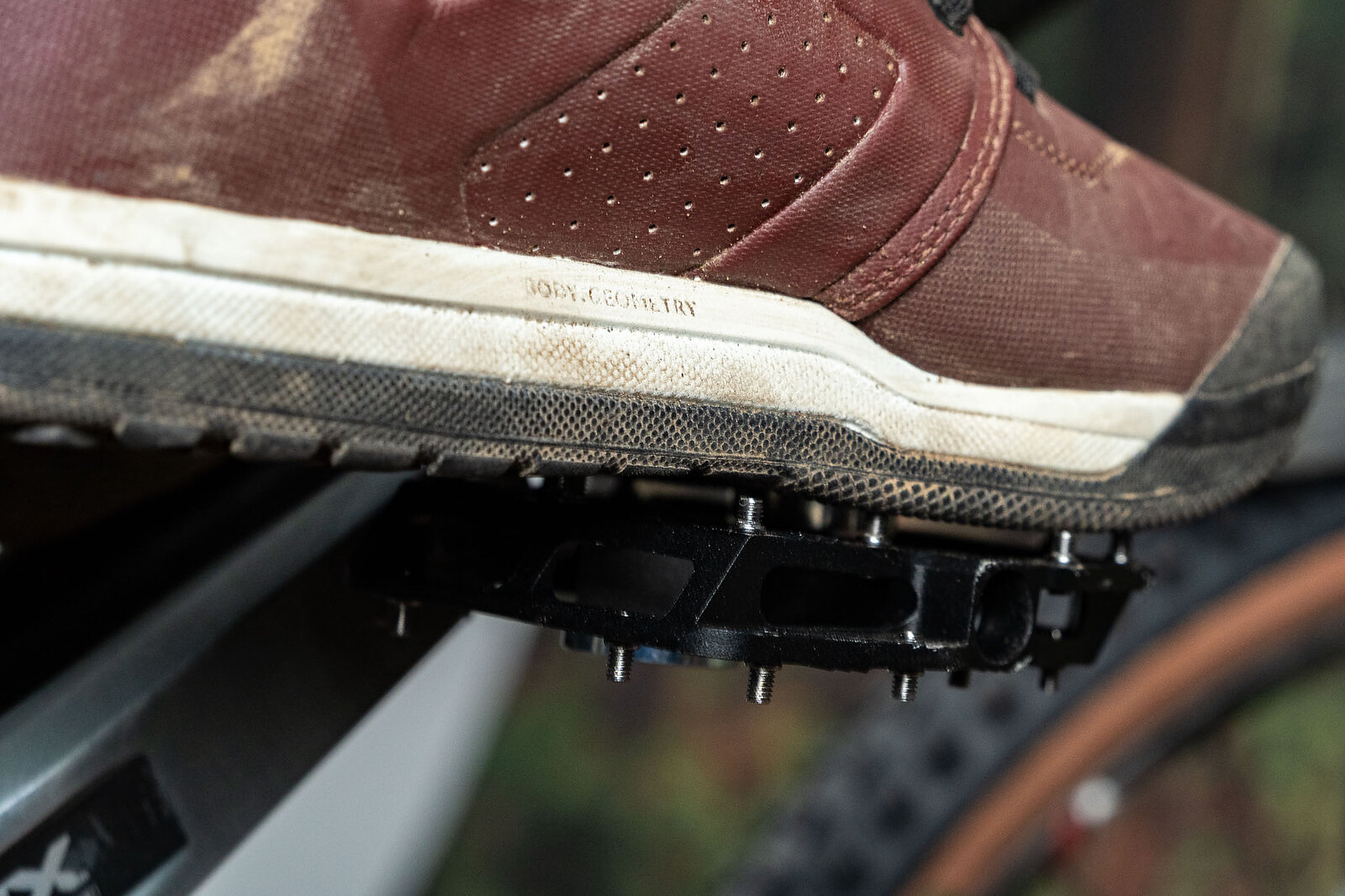
Best of Both Worlds?
Anytime I’m promised the best of both worlds I mentally prepare to deal with the uncanny valley, that AI-populated hellscape between reality and obvious depictions of it. So how does Magped fare in this regard? Can a pedal really deliver the best of clipless and flat pedals, with none of the downsides?
Almost. The Magped does a really good job of bridging this gap while feeling natural and intuitive. But there are a few learning curves to figure out. The first is the initial tug of the magnet, that’s not backed up by a cleat. When you pull up on your feet, it feels like you’re clipped in. So if you don’t know how to lift your rear wheel without cheating with clipless pedals, it feels like you’re going to get away with it, but you won’t. The magnets will pull apart and you’ll shin yourself. Similarly, as you go to dab, it feels like you need to twist and release your foot. You don’t need to, it will pull off in just a second, but still, you get to taste that moment of panic. I adapted to both of these factors in a couple of rides.
The one thing I’m still adapting to is the issue of float. Clipless pedals have some float between the cleat and retaining mechanism. I hate float when I’m descending. It makes my stomach churn. If you’ve ridden clipless pedals for a long time you’re probably desensitized to it, but if you’re coming from flats, you’ll notice that there’s a degree of float between the magnet and the cleat. They can slide around just a little bit. Eventually the pins catch, and you’re locked back in, but it’s not as confidence-inspiring as a sticky shoe and a normal clipless pedal.
I think part of the issue here is that some of the most important front pins on the pedal are falling into the cleat channel. So they’re not actually biting on rubber where I’m used to them locking in. The Magpeds are still plenty secure, but it’s taken several rides to actually trust them to be secure, even with this float. All that to say, the Magpeds perform well, but especially if you’re coming from flat pedals, give yourself some time to adapt to their subtly different mode of retention.
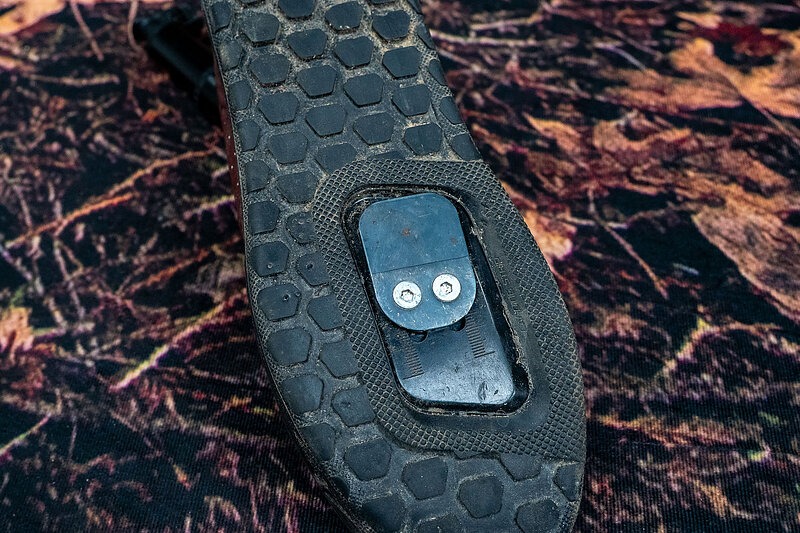
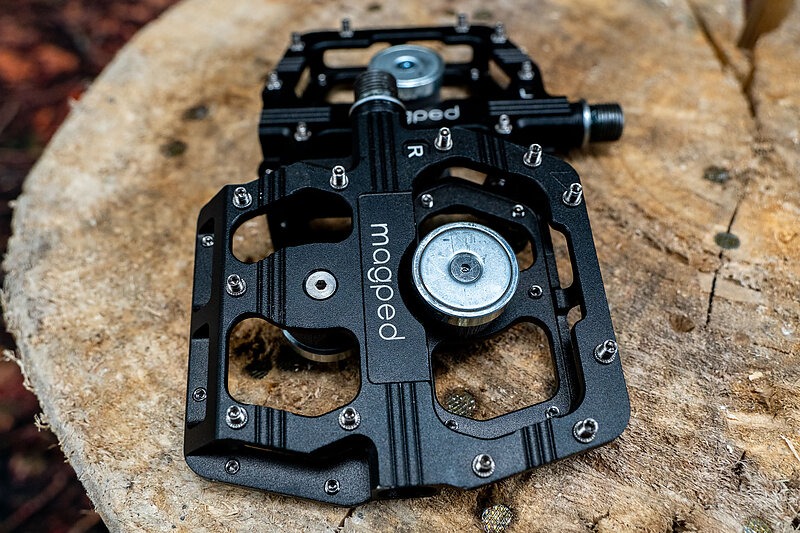
For Now
Magped’s new Gravity pedal allows for a more natural foot position than its previous options, and delivers an impressive combination of attributes from both flat and clipless pedals. It’s a great choice for folks looking for a more secure flat pedal experience and those who constantly find themselves looking for greener grass on the other side of the pedal divide.
Learn more: Magped
